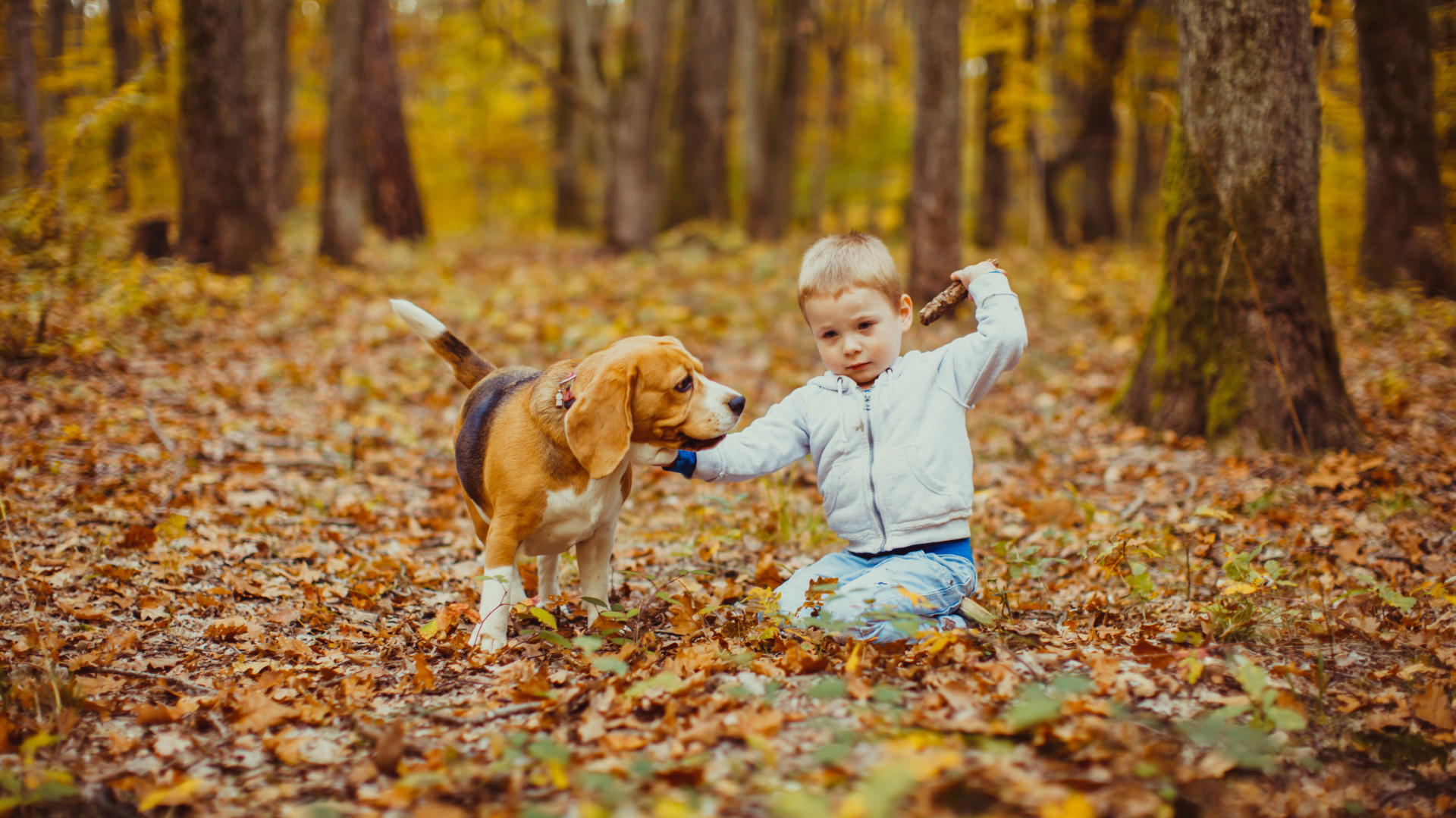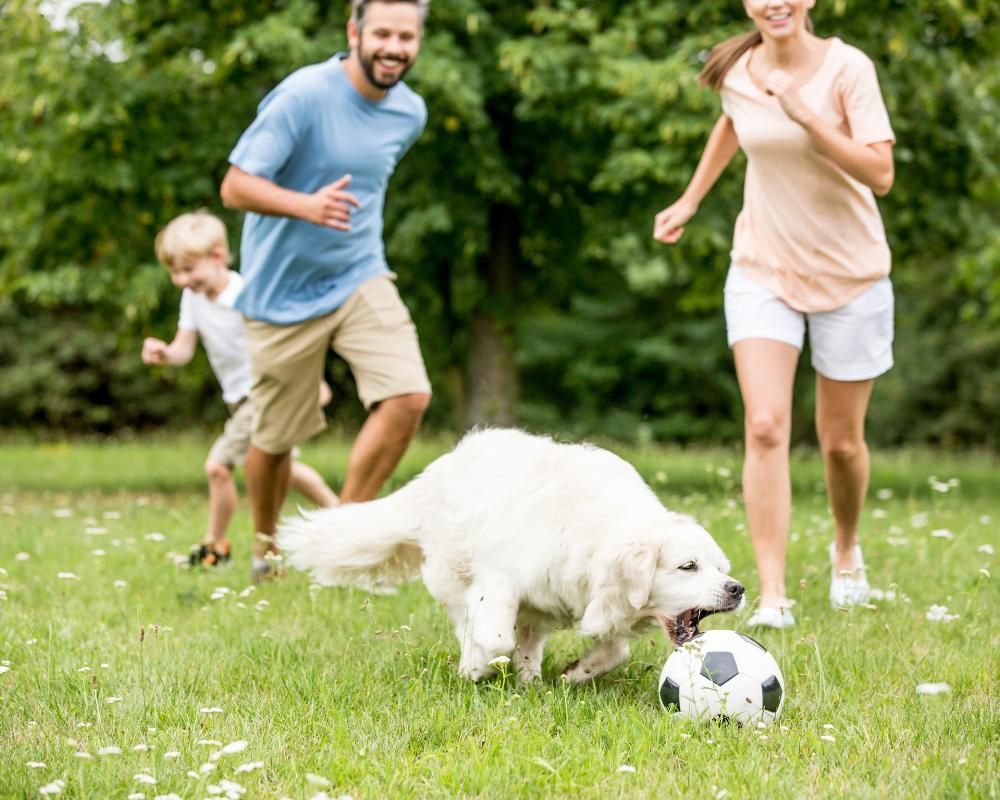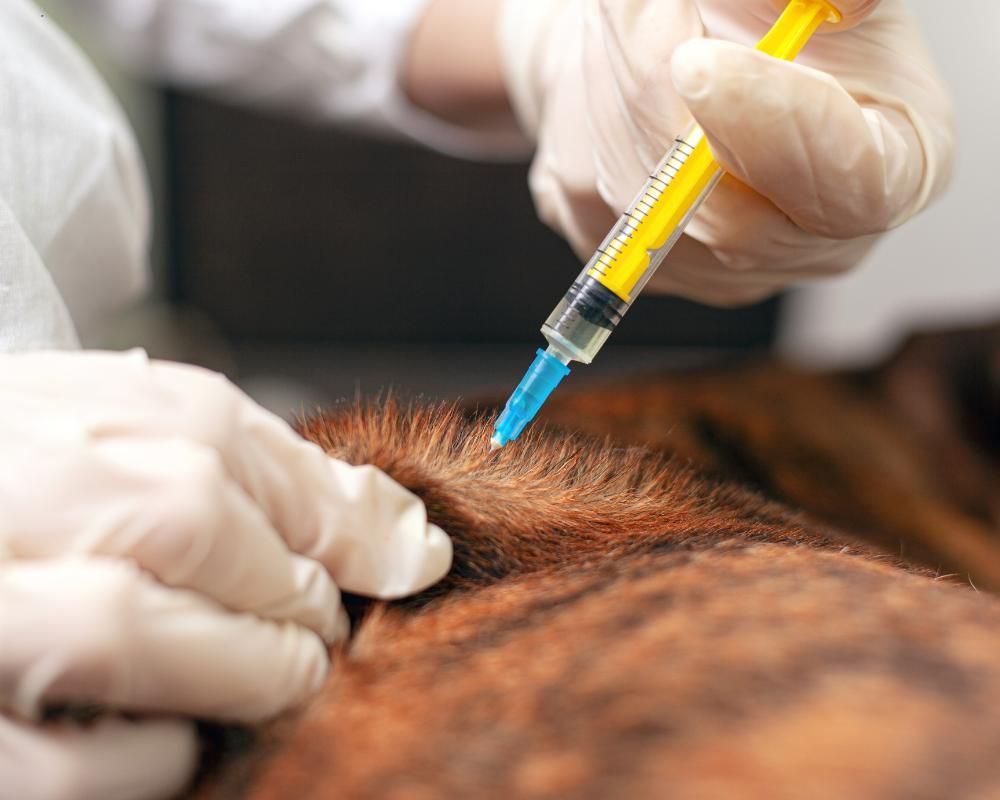Managing Fall Allergies In dogs - Signs and Treatments
Seasonal allergies are common in people and pets but when the itchies, sneezes, and rashes start, it's a good idea to check with your vet to discover whether it's allergies or something else. Here's a quick overview of seasonal fall allergies in dogs and what this post will cover.
Dogs Can Develop Allergies At Any Age

Unlike food or medication allergies, which can be found at any time, dog seasonal allergy symptoms are seen during specific times of the year. The same allergens that cause a reaction in humans, such as dander, grasses, weeds, trees, insects, pollen, and mold, can cause dog allergy symptoms.
While most seasonal allergies start when a dog is young, some dogs may develop them later in life, especially if their family moves to a new geographical area or climate.
In some cases, like children, dogs may 'grow out of' some seasonal allergies too.
Symptoms of Fall Seasonal Allergies in Dogs
- Does your dog have itchy, watery, or runny eyes?
- Do you notice red, irritated skin?
- Does your dog have itchy ears or frequent ear infections?
- Is your dog sneezing?
- Have you seen areas with hair loss?
- Does it seem like your dog won’t stop licking?
- Do you see large, open sores or swelling around your dog’s feet?
Any of these symptoms can be a sign of dog fall allergies.
Dogs Can Get Hay Fever
Sneezing and watery eyes are a good indicator your dog may be suffering from hay fever or allergies to the dust and mold that can be kicked up during autumn as the leaves fall. While these are common symptoms others can occur that include scratching, itching or nibbling at the eyes, ears, mouth and muzzle,
Itchy Dog? Hotspots and Other Causes
Itchy and red skin, flaking, lesions are all signs your dog is experiencing allergies Hot spots are characterized by raised or inflamed skin, hair loss and a moist wound that your dog seems determined to make worse with excessive licking, grooming or nibbling. Spots can start small, in folds or the haunches which are the most common areas.
Treating & Managing Your Dogs Fall Allergies
When you begin seeing signs of dog allergies, it's important to find out if these are actually allergies or signs of another issue such as ear mites, parasitic infections, fleas or reactions to their environment or food.
For hay fever allergies, routine rinsing of your dog with clear water after an extended time outside can help remove the allergens before they get carried into the home. Shampoos meant to remove allergens and sooth skin are also available. Some dogs may benefit from steroid treatment to help reduce inflammation and itching. Some vets may prescribe antihistamines as well but be wary and don't follow 'Google' advice and try to treat your dog with over the counter human medication without discussing it with your vet. Some medications can have dyes and coating that can be harmful for your dog.
For skin allergies, especially where there is a contact with an irritant causing the hot spot, a gentle rinsing of the area with clean tepid or very slightly warm water can help remove the cause. If that's the cause, the spots should heal fairly quickly on their own with minimal treatment beyond regularly rinsing the spot and possibly treating it with a pet-safe anti-itch cream to reduce your dogs drive to continuously lick at the spot and let it heal.
In more severe cases, your dog may need to temporarily wear a cone or collar to prevent them from accessing the area while it is healing.
Need More Help? Visit Chipman Road Animal Clinic, Your Local Veterinary Experts
Chipman Road Animal Clinic is a veterinary pet clinic providing the best dog allergy treatment in Lee's Summit and the Kansas City area. We also provide affordable treatment for all pets, including animal emergencies. If you have a dog, cat, or other pet emergency, our experts can help with caring, prompt treatment. To learn more, please contact us! We are a walk-in only clinic but you can call us at 816-524-1886



















